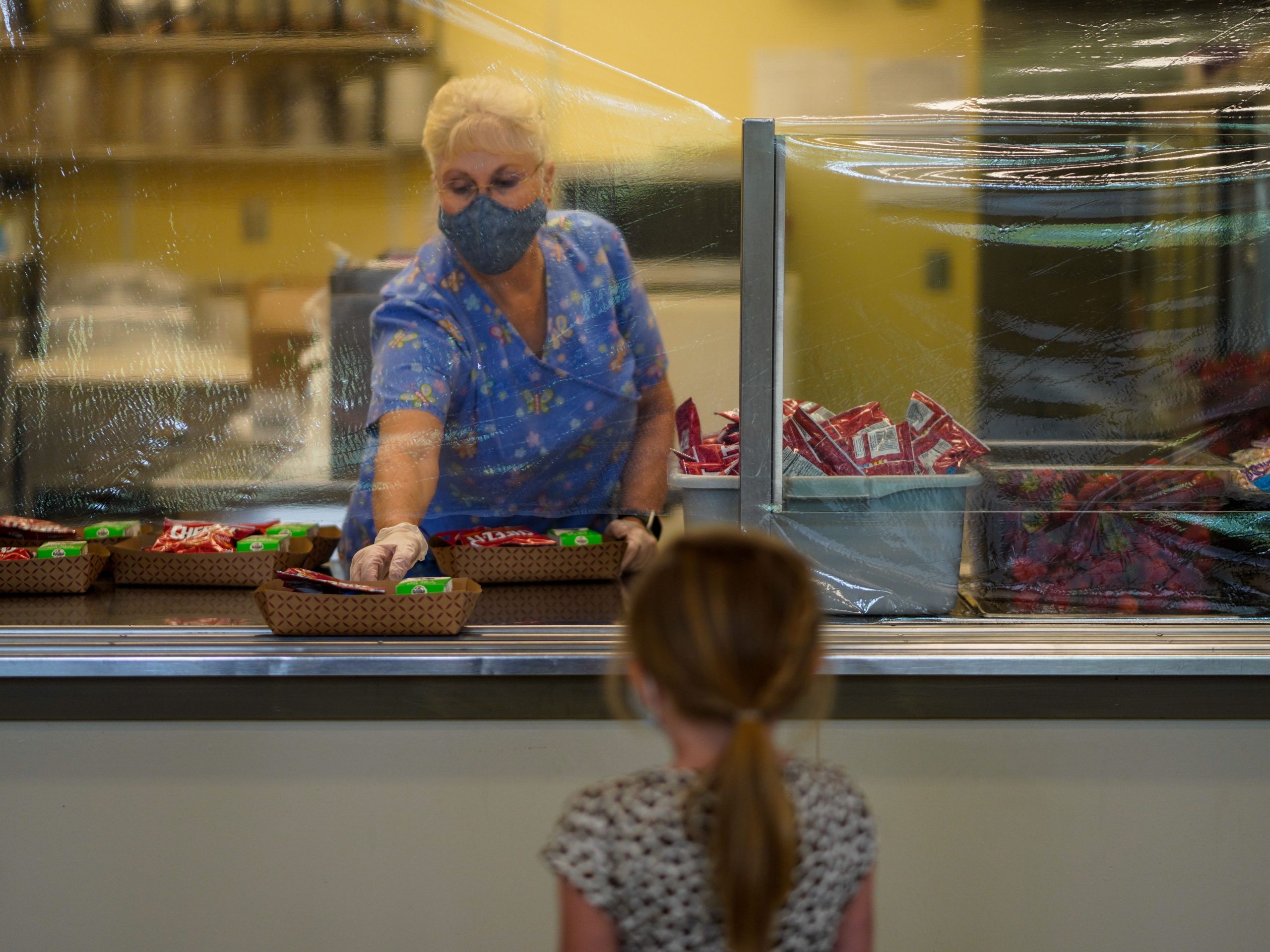
- The Biden administration says school lunch workers should be full-time employees so they can be part of a union.
- It's part of a report released Monday on how to increase worker power in the US.
- School cafeterias are dealing with intense labor shortages, making it hard for schools to feed students.
A school in Ohio ordered pizza to feed students. Parents in Minnesota volunteered to work lunch shifts amidst a labor shortage "crisis."
The Biden administration has an idea: Schools should hire cafeteria workers as full-time employees.
The recommendation comes from the Biden administration's first report released Monday by a new task force meant to bolster both union membership and worker organizing.
It's a measure that could potentially cut down on labor shortages in the sector, and bring another frontline group the power to bargain for benefits as a collective unit. The suggestion shows how Biden — who has said he wants to be the "most pro-union President leading the most pro-union administration in American history" — may be rethinking the low-wage work that supported much of the economy pre-pandemic. In recent months, low wages, unpredictable schedules, and a lack of benefits seem to have destabilized many service jobs as workers quit en masse in search of a better deal.
The task force is recommending that, when it comes to school cafeteria workers, the Department of Agriculture explore how it can use its "purchasing power with subgrantees and their contractors to employ full-time workers in the school lunch and child nutrition programs."
The Atlantic's Giulia Heyward reports that many cafeteria workers have "short-hour positions," where they technically don't work full-time. That can disqualify them from receiving full-time benefits like health insurance.
"The Secretary of Agriculture has the authority to provide for USDA-administered school lunch and child nutrition programs and has the discretion to enact requirements necessary to carry out such programs in order to safeguard the public interest, including the nutritional needs of children," the report says. "This authority should be exercised to ensure that subgrantees and their contractors retain a stable and high-quality workforce of full-time employees."
Across the economy, many sectors are dealing with so-called labor shortages, although data on who's leaving suggests workers might see it as more of a wage shortage.
The taskforce report says that utilizing full-time employees would "likely ensure uninterrupted service delivery of
food services." Moving workers to full-time would also likely increase the union membership rate density, since full-time workers are more likely to be union members. According to the Bureau of Labor Statistics (BLS), the union membership for full-time workers in 2021 was 11.1%, compared to just 6.1% for part-time workers. Workers who are members of unions made nearly $200 more on a week compared to their peers who are not union members.
In 2021, union membership fell yet again, following a decades long trend. Just 3.5% of workers in food preparation and serving related occupations were represented by unions.
